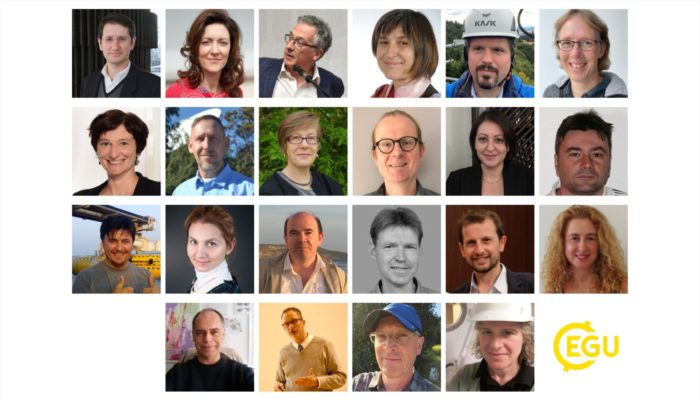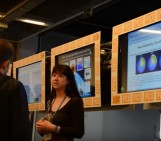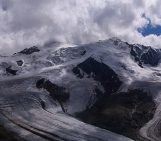
It’s official: Europe’s leading organisation for Earth, planetary and space research has now entered the third decade of its existence! This week, the European Geosciences Union (EGU) celebrated its 20th birthday. Since it was first founded, EGU has grown in strength and scale to include 22 scientific divisions, responsible for activities related to the Earth, planetary and space sciences.
I spoke with our Division Presidents to hear what this 20-year milestone means to them.
EGU turns 20! What does this anniversary mean to you?
Ira Didenkulova, Natural Hazards: Basically, my scientific life and career started with EGU and is strongly linked to it. I attended EGU’s General Assembly in 2006 when I was a PhD student and since then I have been a regular attendee. It is a part of my life, a tradition, a mission, and much more than a conference!
Viktor Bruckman, Energy, Resources and the Environment: EGU’s anniversary marks 20 years of success in the promotion of geosciences and establishing lasting collaborations across disciplines. Since my very first time at EGU’s General Assembly in 2009, I am truly impressed and – being based in Vienna – proud of how EGU developed to one of the leading global scientific unions. I am very sure and confident that this success story continues, as the key to tackling some of humanity’s great challenges lies in geosciences, and because there is a team of excellent scientists behind the Union, with immense dedication and passion for EGU.
Maria-Helena Ramos, Hydrological Sciences: 20 years is so young! To me, this anniversary shows how far we have come and how far we can still go. EGU has played such a big role in advancing geosciences, building a strong community, and fostering networking for geoscientists in Europe and beyond. This motivates us all to keep moving forward and bringing new activities and ideas to the Union.
How has the Union helped you professionally? Any examples of how it has shaped or defined your career?
Jens Klump, Earth and Space Science Informatics: When I joined EGU as an Early Career Scientist, the ESSI Division did not exist. I was delighted when an ESSI Division was created at AGU, and then this initiative was carried across to EGU. Right from the start, there was a strong international network between the two sister organisations. This network of peers in ESSI helped shape my career and gave my scientific interests a home.
Marc De Batist, Stratigraphy, Sedimentology and Palaeontology: The General Assembly has always been the ideal opportunity to network, meet with colleagues and friends for work or for fun, and to present and listen to science updates. It has also always been the occasion where the PhD students I supervised gave their first oral presentation at an international conference.
Carleen Tijm-Reijmer, Cryospheric Sciences: The Union and especially the General Assemblies helped me establish a network within the cryosphere community. Since the General Assembly programme includes a wide range of topics from specific disciplinary subjects to topics on the interface of disciplines, it also allowed me to broaden my existing knowledge. Moreover, it was and still is easier to talk to people in person than over email or online calling platforms.
Lisa Wingate,Biogeosciences: It has inspired me scientifically and helped me meet so many of my collaborators. Being a volunteer in the Union has also exposed me to a range of female role models and diverse leadership styles that have been important for my career development.
What advice would you give to someone looking to be a part of EGU?
Claudio Zaccone, Soil System Sciences: EGU offers tremendous opportunity for young scientists from different countries to meet with colleagues and peers. It is a powerful tool to go beyond the traditional scientific frontiers of all disciplines and helps cross-link individuals with very different backgrounds and expertise.
Marian Holness, Geochemistry, Mineralogy, Petrology & Volcanology: Propose a session for the General Assembly! Offer to join the Science Officer Team of a Division that you feel the most affinity towards, this is always a good place to start!
Jens Klump, Earth and Space Science Informatics: If you get the chance to go to the General Assembly, look beyond the boundaries of your immediate discipline and check out the networking events. Especially for an early career researcher, there is still no better way to build your network than attending networking events and poster sessions. Poster sessions are great because they will give you more time to discuss your ideas and float new ideas than a polished oral presentation with just one or two short questions.
Francesco Soldovieri, Geosciences Instrumentation and Data Systems: It is important to have an open mind and be fully inclusive to embrace opportunities of professional growth and cooperation, especially in areas apparently far from yours.
Johan van der Molen, Ocean Sciences: Think of what you might want to do and find the right people to speak to – there’s plenty of things to do. The right slot may not be available immediately, but roles are constantly changing and new ones being introduced, so every chance to get involved.
Looking ahead, are there any initiatives you hope that the Union will undertake, and why?
Jeroen van Hunen, Geodynamics: EGU’s 20 years is definitely a success story: I am old enough to remember the first EGU meeting, and it has evolved a lot since then. In terms of the future, it could be that going to many conferences in the way we used to may not be sustainable, and I hope that EGU will continue to explore the future of EGU in that light and think about new ways to enable us to continue to hold these conferences in one format or another. In the long term, EGU will thrive better if it is able to adapt.
Maria-Helena Ramos, Hydrological Sciences: In the future, I would like to see the Union with an increasingly stronger influence in Science for Policy and acting as a hub that bridges many other key interfaces in geosciences, such as the Science and Society interface. The Union can be an efficient “multiple facilitator” for collaborations that target these interfaces, co-implementing with its members creative pathways for geoscience impact in a diverse and interdisciplinary environment.
Philippe Jousset, Seismology: Simply keep going by keeping the fundamental aims always alive: Science, Discovery and Education. Let’s avoid being biased by fashion, which reduces the breath of EGU’s long term vision.
On a lighter note, could you share with us a fond memory from your time as Division President?
Viktor Bruckman, Energy, Resources and the Environment: Each year, we publish a special issue with contributions from our ERE division. This year, a young colleague approached me during the General Assembly and was unsure if she was prepared enough to contribute her research to that special issue, since it would be her first publication. I tried to encourage her, since gaining publication experience is one of the reasons that we have the option to publish presented content. Eventually, she submitted her research and it is now one of the best papers this year. And – to be honest – this is just one of many fond memories I have!
François Schmitt, Nonlinear Processes in Geosciences: I liked the last General Assembly, which was the first one in person after a few virtual ones. I hope we will keep the in-person meetings, which are much more enjoyable for scientific exchange.
Ira Didenkulova, Natural Hazards: You know, my Presidency took place during the challenging COVID-19 years, where it almost felt like EGU was starting from scratch, inventing new ways, and trying something different. It was the time of trials: very exciting, intense, and virtual. And as we were undertaking this challenge the whole EGU Council was acting as a team, supporting each other like a family. So, that was very special, warm, and kind, notwithstanding COVID-19, stress, and virtual life. I am very grateful to this experience; it was very enriching and I’m thankful to so many great people I met in the Council.
Thank you to all the Division Presidents who were able to respond to our questions. Click here to see the full list of Scientific Divisions and their presidents. And of course, happy EGU anniversary!




